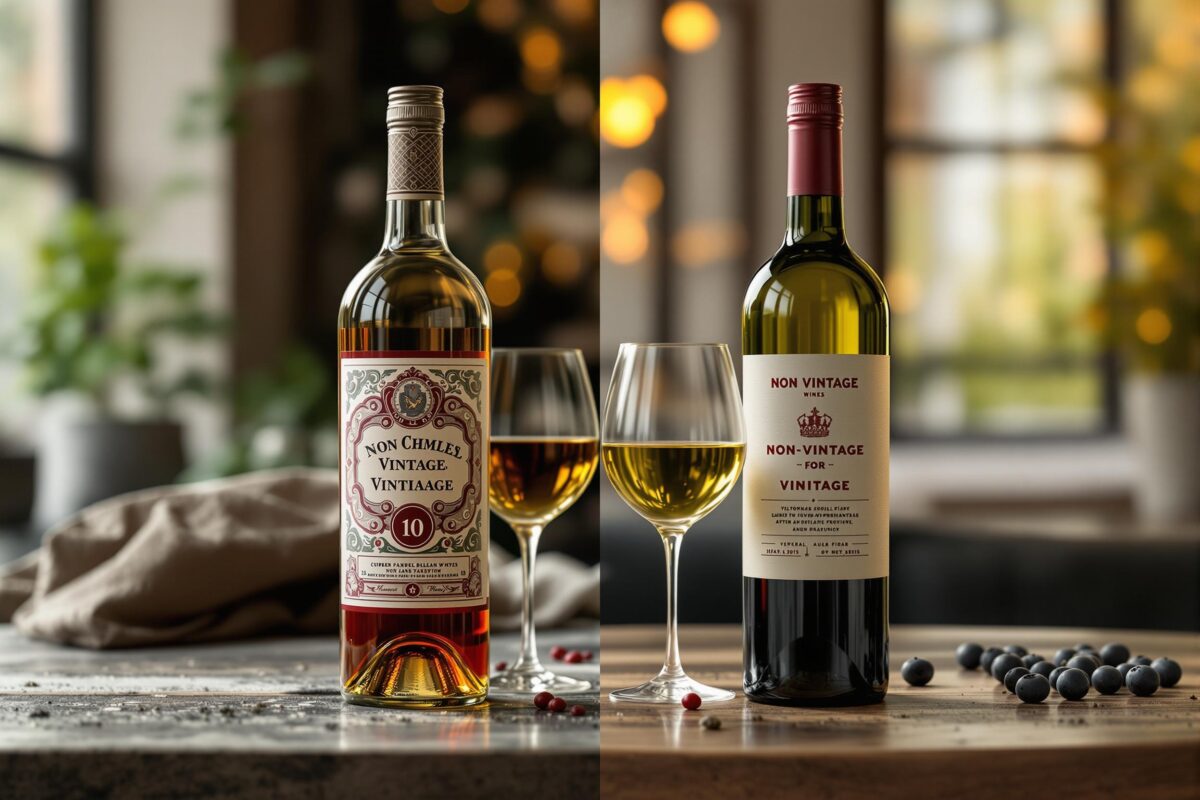The Evolution of Vintage vs. Non-Vintage Wines: Historical and Modern Perspectives
Historical Roots of Vintage Wine Production
Vintage wine’s history intertwines with winemaking itself. Early producers noticed yearly variations in grape quality due to weather. Exceptional years led to distinct wines, marking the rise of vintage designation. Terroir, the ‘taste of place’, became paramount, especially in regions like Bordeaux and Burgundy. Vintage wines became expressions of nature, capturing a moment in time.
The Rise of Non-Vintage Wine
Non-vintage wine arose from a need for consistency and accessibility. Blending wines from different harvests allowed producers to offer reliable taste, irrespective of yearly variations. This approach, common in Champagne and some brands, democratized wine, making it more affordable and readily available.
Modern Trends: Shifting Consumer Preferences
Today’s wine market sees a dynamic interplay between preferences. Consumers appreciate both vintage nuances and non-vintage reliability. Sustainability is a growing concern, with consumers seeking eco-conscious wines. In vintage, terroir expression and uniqueness are key. Non-vintage thrives on consistent flavor and value. Technological advancements benefit both, enhancing overall quality.
Key Trends in Wine-Making: The Role of Harvest Year and Climate
Vintage Year Significance
The vintage year is crucial for vintage wine. It reflects the entire growing season’s climate—temperature, rainfall, sunlight—impacting grape development and quality. A good year yields complex wines with aging potential, while challenging years require skill to mitigate negative impacts, sometimes creating uniquely characteristic wines.
Climate Change Impact
Climate change presents both challenges and opportunities. Shifting weather patterns affect grape growing globally. Warmer temperatures can lead to earlier harvests and altered ripening, potentially impacting flavor balance. Increased extreme weather events can stress vines and reduce yields. However, some cooler regions might benefit. Winemakers are adapting with new practices and grape varieties.
Sustainable Winemaking
Sustainability is becoming increasingly important, influencing both vintage and non-vintage production. Practices like soil health focus, biodiversity, water conservation, and reduced chemical use produce high-quality grapes with minimal environmental impact. Consumers actively seek these wines, signifying quality and responsible production.
Decoding Wine Labels: Navigating Vintage, Millésime, and Importance
Understanding Vintage Labels
Vintage labels indicate a wine’s origin and potential. The vintage year reflects the growing season’s climate and offers insights into potential quality. In regions with significant variation, like Bordeaux, understanding vintage labels is crucial. Vintage charts offer valuable information on a year’s quality, helping informed decisions.
Demystifying Millésime
‘Millésime’, often seen on sparkling wine labels, means ‘vintage’. It indicates production from a single year’s harvest. In Champagne, where non-vintage is standard, Millésime signifies an exceptional year with high-quality grapes. This declaration showcases confidence in aging potential and unique characteristics.
Non-Vintage Labeling
Non-vintage labels lack a specific year, reflecting the blending of multiple harvests for consistent flavor. The focus is brand identity, not yearly variation. Labels often highlight the brand, appellation, or grape varietal, assuring consumers of familiar quality and taste.
The Chemistry of Wine Blending: Maintaining Consistency
The Art and Science of Wine Blending
Blending for non-vintage wines is a delicate balance of art and science. The goal is a consistent profile, aligning with the producer’s style despite yearly variations. It demands understanding wine characteristics from different harvests and skillful manipulation for a harmonious blend. Sensory expertise meets meticulous chemical analysis, involving trials and tastings for a perfect blend.
Techniques in Wine Blending
Key blending techniques include using reserve wines—aged wines from previous years added for complexity and continuity. Blending different grape varietals or wines from various vineyard sites adds further complexity. These methods allow winemakers to navigate vintage variation and deliver consistent profiles.
Wine Quality Control in Non-Vintage Production
Rigorous quality control is essential for non-vintage wines. It starts with grape selection and continues through every stage. Labs monitor key parameters like acidity and alcohol levels, while tasting panels assess sensory characteristics, ensuring adherence to quality standards for reliable consumer satisfaction.
Interactive Visual Breakdown: Comparing Wine Characteristics
Terroir Expression: Vintage Wine
Vintage wine excels at expressing terroir—the unique environmental factors influencing grape growth. A single-year harvest captures specific conditions, varying the wine’s character yearly. Enthusiasts appreciate these nuances, seeing each bottle as a snapshot of a specific place and time.
Flavor Profile Consistency: Non-Vintage Wine
Non-vintage wine prioritizes consistent flavor. Blending mitigates variations, delivering a predictable profile. While base wines retain terroir characteristics, the focus shifts to brand consistency. This approach provides a reliable and recognizable taste experience year after year.
Price Point and Accessibility
Price often differentiates vintage and non-vintage. Vintage, especially from exceptional years or regions, commands higher prices due to perceived quality, limited production, and aging potential. Non-vintage, with broader production and consistent profiles, generally offers greater affordability.
Actionable Tips for Wine Enthusiasts: Choosing Between Vintage and Non-Vintage
When to Choose Vintage Wine
Choose vintage for exploring unique harvests and terroir. Ideal for special occasions, cellaring, or vertical tastings (comparing different years). Research vintage charts for potential quality. Consider it a journey of discovery, appreciating nature’s yearly variations.
When to Choose Non-Vintage Wine
Choose non-vintage for consistent flavor and value—suited for everyday enjoyment or casual gatherings. Focus on brand reputation and house style when selecting. It offers approachable quality without the premium price, providing a reliable experience.
Exploring a Wide Selection
Whether you’re a collector seeking rare vintages or prefer reliable non-vintage options, explore a world of possibilities. Discover exceptional wines that cater to your preferences and elevate your experience with both the unique charm of vintage and the steady quality of non-vintage.
Embrace the diverse world of wine. Vintage and non-vintage offer unique pleasures. Choose what suits your palate and the occasion. Whether celebrating a special moment or simply enjoying a glass, the perfect wine awaits.
